Crape Myrtle Insects & Diseases

Fortunately, few of the common crape myrtle health issues pose a serious threat to the survival of the tree. Attentive pruning is often all that is required to keep crepe myrtles healthy and vigorous for decades.
Crape Myrtle Insects & Diseases Red Flags
- White spots with red inside on trunk
- Black on crepe myrtle trunks
- Sticky stuff on and under crepe myrtles
- White powder on crepe myrtle leaves
What is Wrong with my Crape Myrtle?




- Scale
- Crape myrtle bark scale, (CMBS) is a minuscule insect that appears as a felt-like gray or white crust on crape myrtle branches, often on the underside away from the sun. When pressed or scraped, CMBS leaves behind a pinkish residue.
- Sooty Mold
- Sooty mold is the name given to several different species of fungi that grow on the surface of some plants. When crape myrtles have aphid or scale infestations, the honeydew produced by the insects provides nourishment for the fungal spores to grow. As the gray fungal mat expands, it can cover leaves and branches.
- Powdery Mildew
- Powdery mildew is another fungus (Erysiphe lagerstroemiae) that affects crape myrtles. Unlike sooty mold, however, powdery mildew can pose a greater risk to the health of the plant. Powdery mildew appears as a grayish-white growth on young plant tissue. Only a few spores are needed, often transmitted by the wind, to take hold and begin an infestation on a crape myrtle. Cooler temperatures and moderate to high humidity are the ideal growing conditions for powdery mildew, so it is most active in the spring and fall. Overwatering, overfertilization, and poor air circulation can contribute to a crape myrtle’s susceptibility to the fungus. As the fungus spreads, it can cause new affected growth to die, with leaves curling and dropping. Extreme cases can cause extensive damage.
- Aphids
- The crape myrtle aphid (Tinocallis kahawaluokalani) is the most common crape myrtle pest. This tiny insect feeds on the sap of the crape myrtle and produces a liquid called honeydew, that can often be observed dripping from crape myrtles in the spring. While the aphids generally pose no serious threat to the health of the plant, their honeydew can lead to the growth of sooty mold.
How Does a Texas Tree Surgeons ISA Certified Arborist Diagnose Sick Crape Myrtles?
For a local Tree Surgeon or Certified Arborist diagnosing sick crepe myrtles is easy through visual inspection.
How Texas Tree Surgeons Treats/ Manages Sick Crape Myrtles?
- Scale
- Systemic insecticides (neonictinoids) are currently the most effective control for crape myrtle bark scale. Additionally, washing the affected areas with a solution of mild detergent and water can remove the insects, and slow their spread.
- Sooty Mold
- Sooty mold is mostly just an unsightly cosmetic affliction, but in extreme cases can interfere with proper photosynthesis in the leaves. The best way to control sooty mold is to manage the underlying insect activity and honeydew production. As the mold dies, it will be washed away by rain.
- Powdery Mildew
- There are several powdery mildew-resistant cultivars of crape myrtle. Even without a natural resistance, powdery mildew can be managed or prevented by allowing crape myrtles to receive full sun, by proper pruning for light and air flow, and by following best practices for watering and fertilizing. Growth that is affected by the powdery mildew fungus should be removed in the fall. Generally, systemic fungicides are not recommended for powdery mildew. However, a certified arborist can properly diagnose the extent of a powdery mildew infection, and provide appropriate treatment recommendations.
- Aphids
- Aphids can be controlled with systemic treatments or insecticidal soaps.
What can Homeowners do to Help Their Sick Crape Myrtles?
- Increase airflow by having their tree trimmed correctly by a certified arborist.
- Decrease moisture on trunks and in canopy by not over watering.
- Using soil amendments can help the health of your tree by providing additional nutrients to boost defense from insects and diseases.
What will Happen to my Sick Crape Myrtle?
Scale, sooty mold, powdery mildew, and aphids are issues that can be easily managed in Crape myrtles. Outcomes with treatment are typically positive and generally will improve overall general health. Results always depend on the severity of infection and how long the problem has persisted without intervention.

Crape myrtles are a beautiful and important part of our North Texas urban forest. While officially the Texas State “Shrub,” crape myrtles are versatile trees that come in many sizes and varieties. We have several blogs on crape myrtles / crepe myrtles to help homeowners with multiple questions surrounding care for them.
Related Blogs
Similar blogs related to this topic


Top 10 Things We'd Tell You as an Arborist if We Weren't Afraid of Hurting Your Feelings
This is a list of tree care worst practices that you, or someone you know may be guilty of. Read the following list at your own risk. You’ve been warned, feelings may get hurt. 1.…
Read more

Avoid These Tree Care Mistakes for a Healthy Landscape
Below is a list of overlooked mistakes that could jeopardize the health of your trees. From missteps in pruning to incorrect watering practices, discover how to give your trees the care they deserve. Red oak…
Read more

Why do Arborists Recommend Soil Sampling in Urban Areas like Dallas?
Soil sampling is a crucial practice in urban areas like Dallas. It helps arborists make informed decisions about your landscape to ensure a healthy urban ecosystem. Our native soils vary widely—from the dense clays of…
Read more
